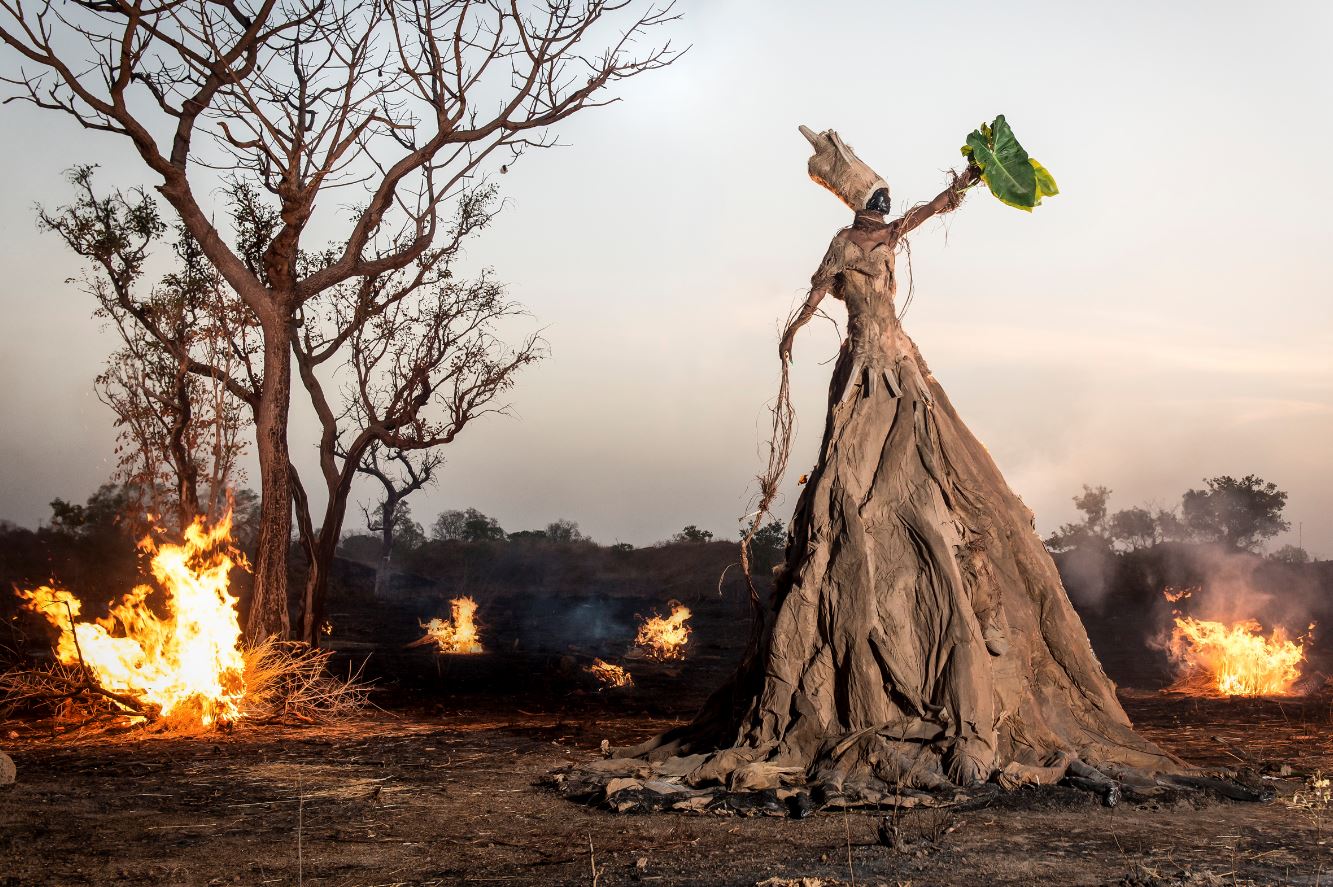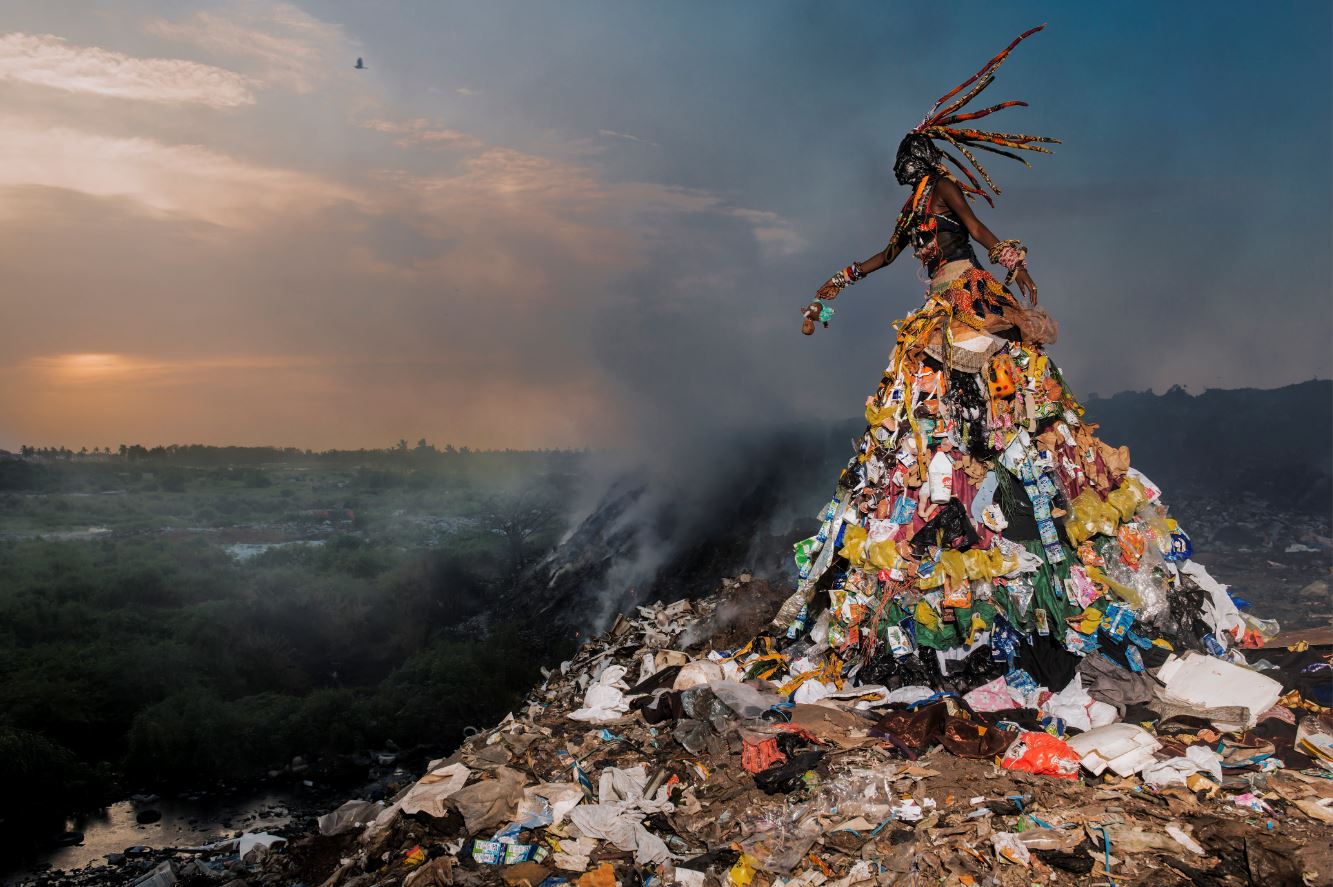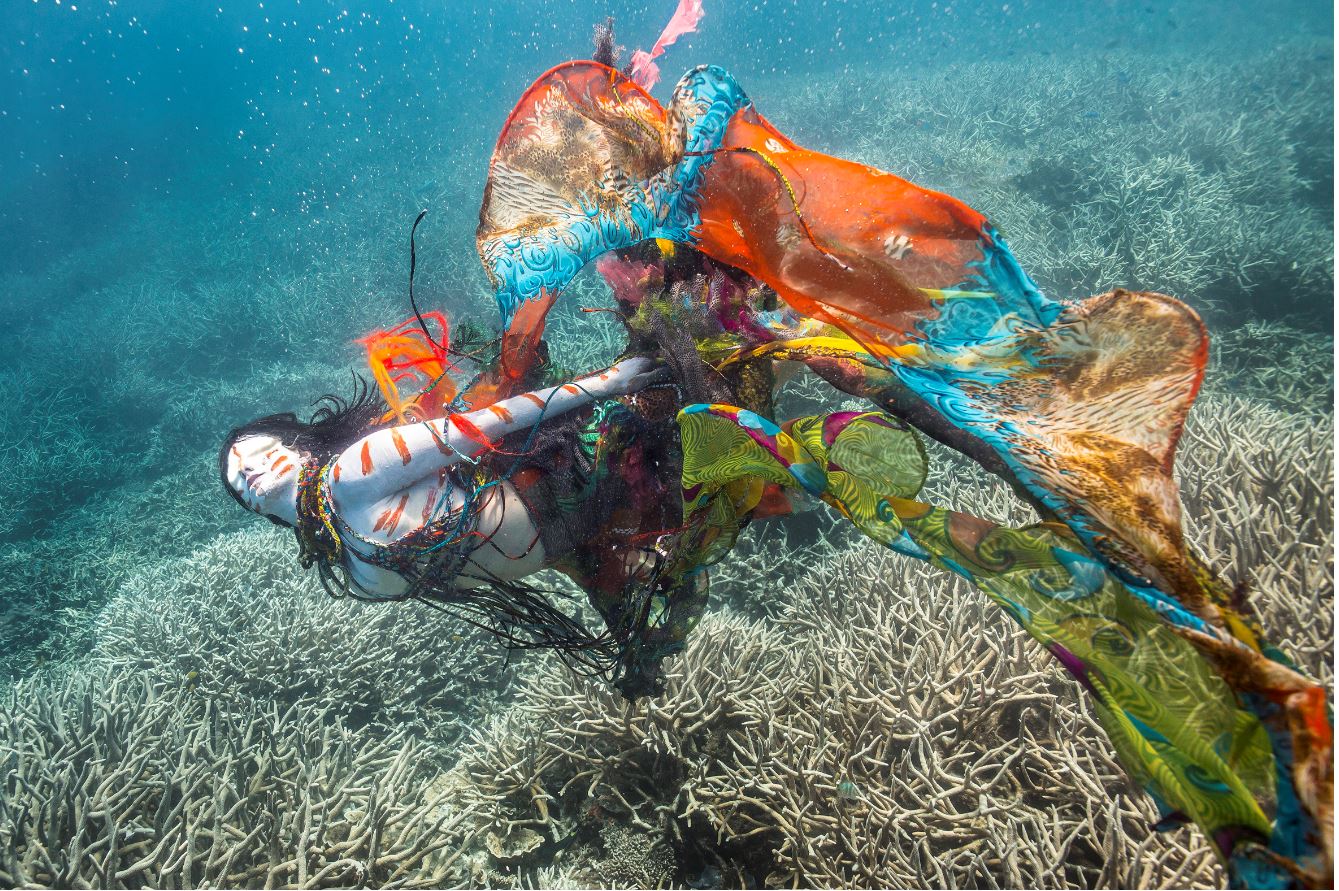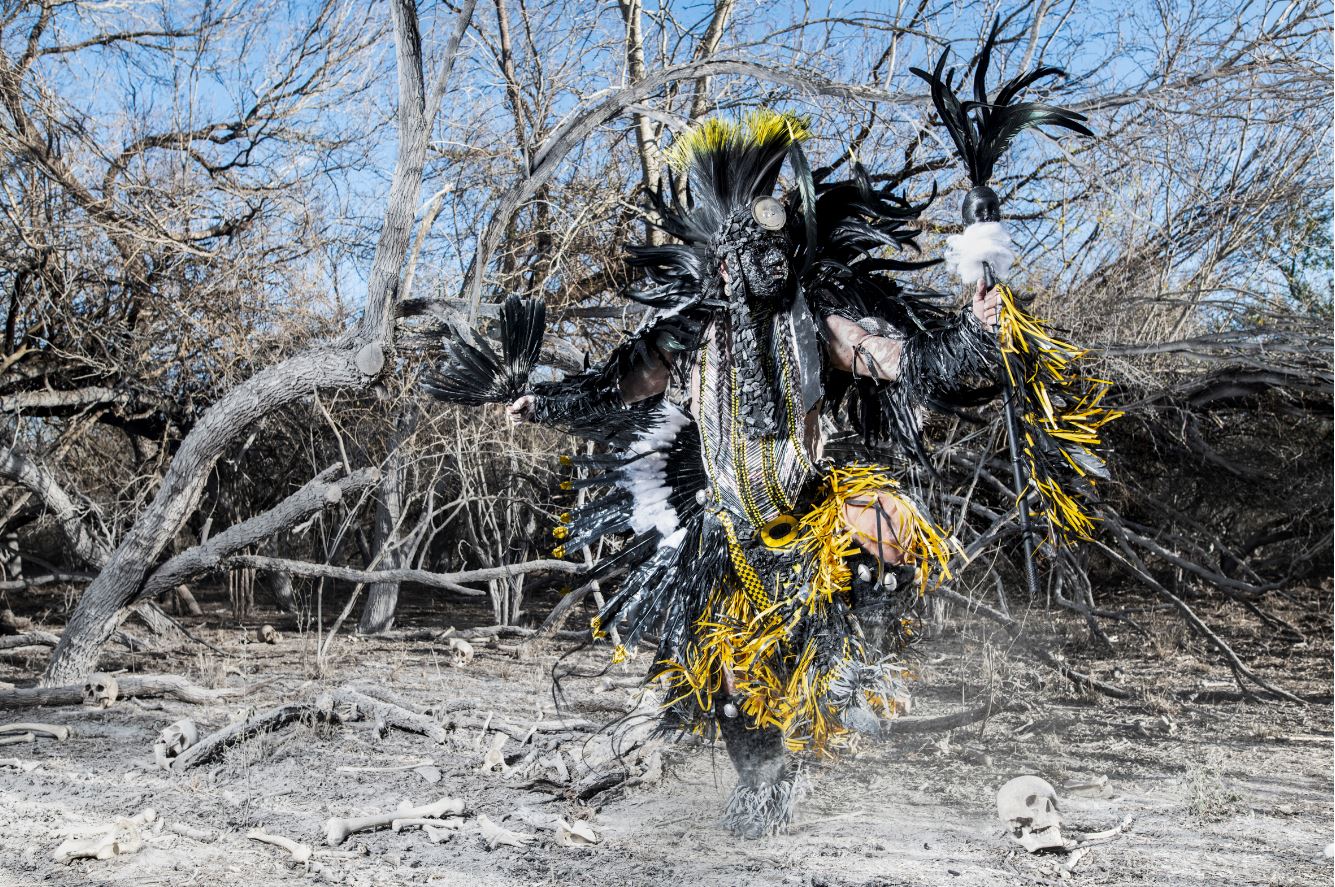Genies' Warning
"The prophecy" by Fabrice Monteiro

The photography is the medium that Fabrice Monteiro has chosen to raise awareness among the Senegalese population of the ecological scourges that threaten its environment. Residing in Dakar, he launches a project to draw young people's attention to the accumulation of waste in the capital. In a cultural syncretism, he conceives a series of photographs that he names: "The prophecy". The presence of a genie capable of spiritually influencing the human race, a supernatural creature called a jinn, makes each photograph unique, powerful and challenging. Wishing to share this tale throughout the world, Fabrice Monteiro travelled to other continents and, last June, revealed the presence of the fourteenth allegory in Texas.
INTERVIEW
Sustainability MAG: Animist religion, jinns, the heritage of masks, European tradition of portraits, fashion postures ... the cultural syncretism shows a lot in your work ...
Fabrice Monteiro: I am mixed race and I grew up straddling two cultures, Belgian and Beninese. If my art is the expression of my being, I think that necessarily this interbreeding has a high impact on my work. Whatever issue I tackle, whether it is slavery or the environment, my desire is to build bridges. When I deal with slavery, I am avoiding the Manichean approach, white versus black, but I am saying instead: this is what a human being is capable of doing in the name of profit. Same for “The prophecy”, the idea is to try to build bridges between cultures and continents. Five centuries ago, the West, chose to subjugate others peoples, to use everything and everywhere, the living and the non-living, to grow and to enrich itself. Today, we have reached a stage where this system no longer works.

Prophecy #6 - Allegory of infertile land (Senegal)
What gave birth to “The Prophecy” project?
When I came back to live in Africa in 2011, in Senegal, I was stunned by the amount of rubbish thrown in the streets and around the villages. In the 1970s, none of this existed. We weren't consuming as much plastic because we were still keeping traditional practices. The continent had not yet been hit hard by globalisation. New generations were born and raised in this environmental chaos. The presence of rubbish is part of their daily life. If we add to this the fact that there is hardly any environmental awareness, either at school or in general, there is little chance of change.
So I asked myself: how can I create images that are strong and meaningful enough to engage this new generation in a discussion? I have chosen to use the tale, to tell a story in which I wanted to bring together art, culture and environment. I imagined staging spirits who would come to speak to humans to bring them a message of warning... that is how “The Prophecy” was born!
So tell us about this tale spun through the photographs...
The idea of this tale is that Mother Nature wakes up one morning and is severely sick! She is sick because she took millions of years to build a harmonious world where humans could enjoy its benefits, but today they are destroying everything at such a speed and pace that she can not manage to restore the balance. So Mother Nature decides to gather her spirits and tells them that: "The situation is so serious, I want you to go there, I want you to appear to men and give them a message of responsibility, or they will not be able to survive their mistakes!" That is how these spirits are going to appear all over the planet in places affected by a specific environmental scourge.

"Mother Nature decides to gather her spirits and tells them that: 'The situation is so serious, I want you to go there, I want you to appear to men and give them a message of responsibility, or they will not be able to survive their mistakes!'" / Prophecy #1 - Allegory of plastic (Senegal)
Does one prophecy speak to you more than another?
The first prophecy was for me a real cry from the heart, it is the expression of a very great selfishness of generation. Previous generations and our own developed a way of operating on the assumption that there would always be plenty of resources, that everything that our planet can offer is there at our disposal, and that we could use them as we wished, turn them into money. Today, we realise that the planet has its limits and that, in the end, it is our children who will suffer the consequences! We are at such a point that they are the ones who are forced to stand up and shout "leave us a liveable planet"! This first prophecy is really the expression of this call.
Are your staged characters spirits, jinns, allegories?
Spirit, genie, jinn, allegory... whatever. What is important is that everyone can find a little bit of himself in these stories and that each of the images is linked to the local cultures, mythology, beliefs and traditions. I try to find something catchy, that refers to what the spectator knows, and that exists in their environment, a way for me to create an interest in the issue. The idea started with the jinns because I began in Senegal, but my approach is to explore the whole planet and end up with a planetary prophecy, each of the themes concerns the whole of humanity.

Prophecy #10 - Allegory of the coral disappearance (Australia)
As it happens. Isn't there a prophecy missing on the European continent?
Precisely, I am preparing a prophecy in Spain. What has become interesting for me is that starting with the same approach: read up on Spanish mythology, about what I could find related to nature and its preservation in culture and local traditions, ... it is very complicated! Whereas in many cultures, every story I have read refers in one way or another to being reasonable towards nature, in Spain I still haven’t find something I can hold on to create a prophecy! Which leads me to think that the West has gradually turned away from this evidence. We would have to relearn that. These prophecies are a way of pulling ourselves together, of rethinking this way of life that has been imposed on us as the unique way of living. This idea that, to be happy, we must consume and consume again, without any connection to the earth. Today we are facing the wall, but we may relearn from certain cultures that have managed to preserve the sacred bond.

Prophecy #14 - Allegory of coal (Texas, USA)
What is the message of your latest prophecy, photographed in Texas?
It was as a result of a radio broadcast that I got the idea of this prophecy. It was about a march by the First American Nations in Eagle Pass against the Dos Republicas mine, which is located on ancestral lands and burial sites of the native Americans. To hear this connection, between the environment and the first nation, I thought it would be a perfect subject for “The prophecy”.
This extraction in Texas makes no sense! These people are destroying ancestral lands, polluting the water, wiping out wildlife to collect inferior quality coal. They even have to add additives to it to be able to burn it. This coal is then transported in kilometres of open-pit wagons which pass through towns, schools, public gardens... with this coal dust coming everywhere. These trains cross the border towards Mexico to power one of the most polluting plants of coal in the hemisphere. In talking with various communities and activists, I was able to understand that these indigenous peoples have been dispossessed of their land, their traditions, their knowledge, and this mine goes totally against their sense of respect for their environment. There was a confrontation between two worlds, which is quite striking and sad in the end. This is something that made me feel that this work was essential. Today, the main client of the coal, the Mexican State, has withdrawn. It is no longer a customer of the mine, and this happened a week after the prophecy was spreadhat. Probably a calendar coincidence but what is important is to point out that things are moving forward, they are moving slowly, but they are moving forward!
Do you see art as a trigger?
Yes. Art has its importance because it speaks to people's hearts. But if we want to truely reinvent ourselves, we need to put the ecological issue at the centre of our concerns. Whether you are a scientist, a banker, a journalist or an artist, whatever the discipline, it is by each of us doing our part that you will really become aware of the issue and eventually make a difference. Today we are at the heart of the 6th mass extinction on the planet and, for the first time, we, humans, are solely responsible for it. Yet we still do not question this supposed progress. We are living a kind of global schizophrenia, and in the end, the only way to change efficiently is if it comes from a global movement. We are facing a unique challenge because it is a whole paradigm that needs to be changed: we need to relearn absolute solidarity.
FABRICE MONTEIRO
Born in 1972 in Namur, Belgium, Fabrice Monteiro grew up in Benin, his father's country of origin. At the age of 22, he began a career as an international model. Today, he lives and works in Dakar as a photographer. This Belgian-Beninese artist intends to carry out artistic projects allowing him to express his ideas and concerns, such as slavery or environmental protection. His photography results in a mix of genres, between photo-reportage, portrait and fashion image. His work has been exhibited at Meg in Geneva (2018), the Mariane Ibrahim Gallery in Seattle (2016) and the Museum of Photography in St-Louis, Senegal (2018).
-Article originally published on October, 2020-




